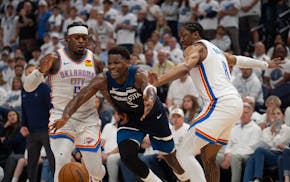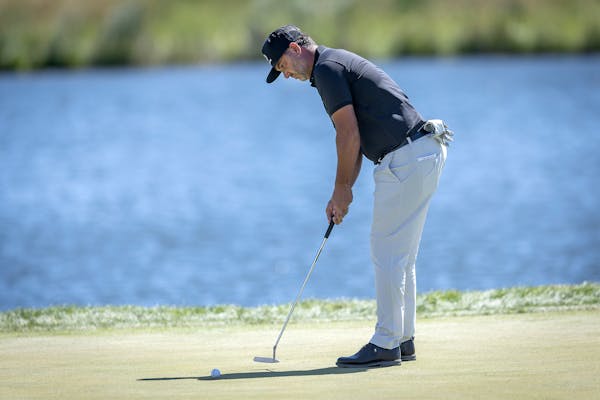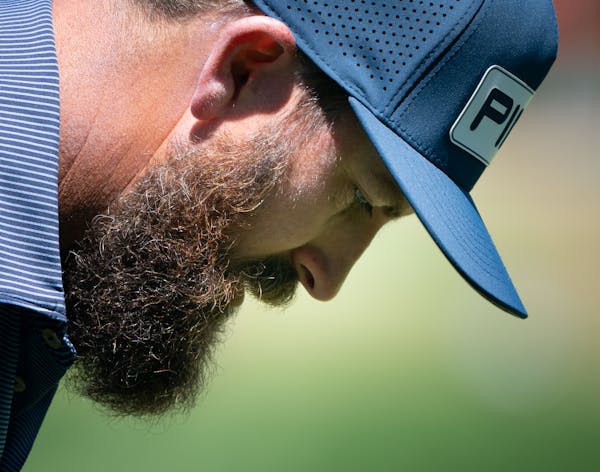You could compare the 18th hole at the TPC Twin Cities to a carnival ride, except that carnival rides are fun.
On the 18th tee at the 3M Open, golfers are asked if they have heart conditions and are advised to secure their loose change and small children.
In Thursday's opening round, Hideki Matsuyama, Tom Hoge and Sungjae Im played the 18th together, if "together'' can be defined as "like they were competing in three different sports in three different dimensions.''
The 18th is a 586-yard par-5. Given the way modern golfers hit their drivers, that does not sound intimidating.
As is so often the case, making golf difficult for the best in the world is not about adding length, but creating strategic hazards and extraneous thoughts. The TPC's 18th hole does so diabolically.
In the first 3M Open, Bryson DeChambeau eagled the 18th to take the lead, only to see Matthew Wolff make a 26-foot eagle putt one group later to win by one stroke.
Thursday, Matsuyama, Hoge and Im demonstrated just how differently the hole can be played, and how it can play with a golfer's mind.
Matsuyama is a Masters champ and national hero in Japan. He was the highest-ranking player in the field. The 18th should have been an eagle or birdie hole for him.
He hit his drive into the pond. He took a drop into the sidehill rough, leaving him a downhill lie, and tried one of those awkward shots that turns 16 handicappers into 20 handicappers. The ball barely reached the bank in front of the green, meaning he would take another drop, this time 160 yards from the hole.
He hit that shot over the green, then resorted to a flop shot that hit the flagstick. He would finish with the rare one-putt quadruple bogey and later withdraw.
Hoge, from Fargo, made a 6 to Matsuyama's 9 but might have had more reason to be frustrated. He hit a straight drive and a beautiful fairway wood to 34 feet below the hole. All he had to do was lag putt and tap in and he would have shot a 65 and tied for the lead.
Instead, he ran his first putt well past the hole, and it skated to the right. He had a 4-foot comebacker that he missed on the low side — he'd say later that a gust of wind affected the ball, and that's what it looked like — leaving him a 9-footer coming back up the hill. He missed that and tapped in for a four-putt 6.
Im followed a nice drive by hitting his approach into the water. He dropped 224 yards away, hit his next shot to 18 feet and made that putt for par.
A saved par, an eagle turned bogey and a one-putt 9. On the same hole, in the same group.
Im finished tied with Scott Piercy for the lead, at 6 under. Hoge finished at 4 under. Matsuyama finished 6 over, the bright lights of Blaine claiming another victim.
The 18th hole determined who was in the lead Thursday, and it may do the same Sunday.
"It's exciting,'' Hoge said. "We certainly had a wide range of scores today. And anything can happen. Into the wind, it's a very demanding hole, there's not a lot of room for bailouts. That's the hardest part — the layups are almost as hard as taking on that second shot.''
The fairway sweeps in the shape of a reverse question mark around the pond, challenging players to go for the green in two.
"Last year, I hit two or three balls in the water there,'' Piercy said. "It's a great closing hole.''
The best golf holes and courses balance risk and reward. Think of the 13th and 15th at Augusta National, or any of the par-5s or short par-4s at St. Andrews that are guarded by sinkholes known as pot bunkers.
At the TPC Twin Cities, going for an eagle on 18 means your ball may sleep with the fish.
"Anything can happen there,'' Hoge said.
He might have meant that in a nice way.

Souhan: Will the Wolves trade for Kevin Durant? Should they?

Souhan: If Edwards is a franchise player, he needs to act and play like it

Souhan: Wolves' weak performance in Game 5 invites change, so don't let it shock you

Souhan: Edwards and Randle flop in the Timberwolves' biggest game of the season



